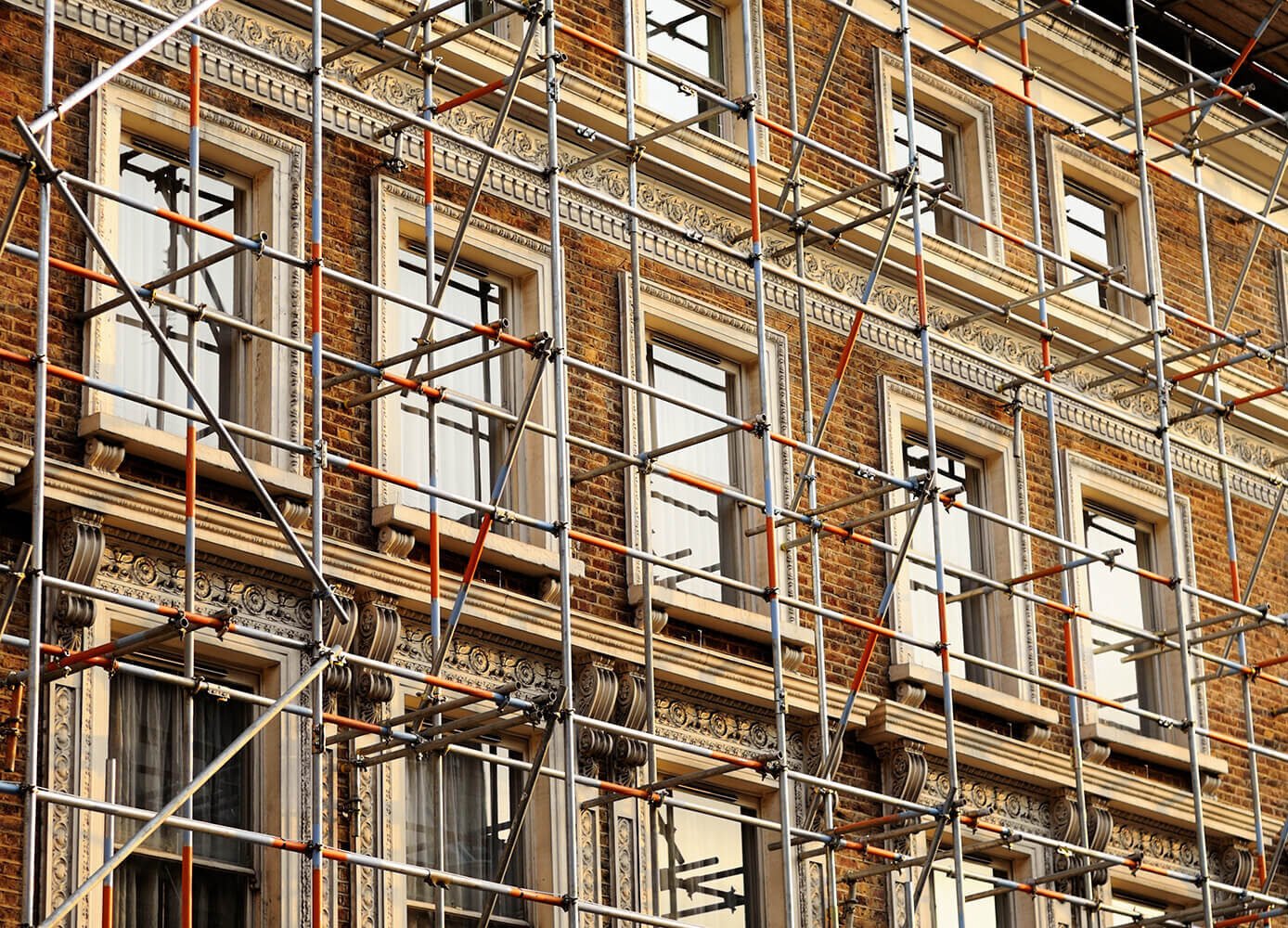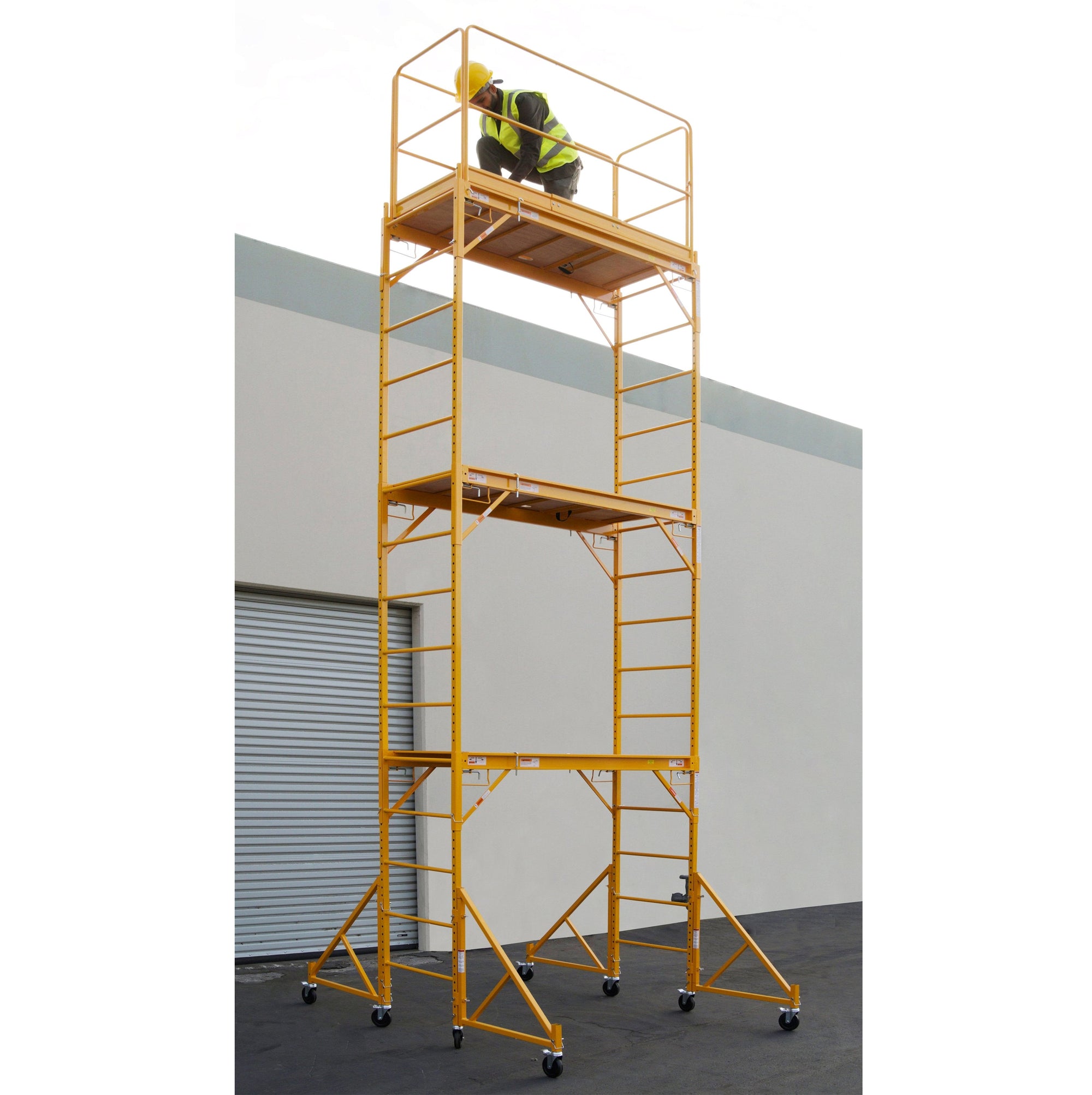Quality Scaffolding Surrey for Both Residential and Commercial Projects
Quality Scaffolding Surrey for Both Residential and Commercial Projects
Blog Article
Checking Out the Different Types of Scaffolding Made Use Of in Building And Construction Jobs
The building and construction industry relies heavily on different kinds of scaffolding to fulfill specific project demands, each offering distinctive benefits and applications. Traditional frame scaffolding offers a strong structure for basic jobs, while put on hold scaffolding is essential for work on high-rise structures.

Typical Structure Scaffolding
Traditional frame scaffolding is one of one of the most widely made use of techniques in the construction sector because of its robustness and convenience. This system is composed of horizontal and upright frameworks that are assembled to produce a stable system for products and workers. The major components consist of upright articles, straight ledgers, and angled braces, which with each other provide a solid framework that can support considerable loads.
Among the key advantages of standard structure scaffolding is its adaptability to various building jobs, varying from household buildings to large commercial structures. The modular style enables for simple setting up and disassembly, making it effective for both lasting and temporary jobs. Furthermore, the system can be tailored in elevation and size, fitting various building styles and site conditions.
Safety is critical in scaffolding applications, and conventional frame systems are geared up with guardrails and toe boards to stop falls and ensure worker protection. Normal examinations and adherence to security policies are essential in maintaining the honesty of the scaffold (Scaffolding). On the whole, standard frame scaffolding continues to be a basic option in the building industry, supplying a trustworthy platform for labor and enhancing total job efficiency

Suspended Scaffolding
Suspended scaffolding uses an unique service for building and construction projects that need accessibility to raised surfaces, especially in scenarios where traditional framework scaffolding might be impractical. This sort of scaffolding is normally put on hold from the roofing system or top degrees of a structure, using a system of platforms, ropes, and pulley-blocks to create a working space that can be gotten used to different elevations.
Among the key benefits of put on hold scaffolding is its versatility. It can be easily repositioned or decreased to suit adjustments in construction needs, making it optimal for jobs such as home window setup, frontage work, and maintenance on skyscrapers. Additionally, the minimal footprint of suspended scaffolding allows for better use of ground space in urban environments, where space is typically restricted.
Security is a crucial consideration in the usage of suspended scaffolding. On the whole, put on hold scaffolding offers a reliable and efficient remedy for accessing hard-to-reach locations in numerous building and construction scenarios, improving both efficiency and safety and security on website.
System Scaffolding
System scaffolding, typically considered as a modern-day option in the scaffolding industry, contains pre-engineered components that can be swiftly assembled and adjusted for different building and construction jobs. Scaffolding. This sort of scaffolding is defined by its modular layout, which permits convenience and effectiveness on work sites, fitting various heights and architectural requirements
Commonly made from high-strength steel or aluminum, system scaffolding uses enhanced toughness and security. The components consist of upright posts, horizontal journals, and diagonal braces, which adjoin firmly, ensuring a robust framework. The layout often integrates standard installations, streamlining setting up and disassembly processes, thus minimizing labor time and prices.

Rolling Scaffolding
Rolling scaffolding is a versatile choice to conventional fixed scaffolding, created for movement and convenience of usage on construction websites. This sort of scaffolding contains a platform sustained by frames with wheels, permitting workers to conveniently relocate it as required. The mobility attribute considerably boosts efficiency, as it decreases downtime related to dismantling and putting together dealt with scaffolding.
Usually created from lightweight products such as light weight aluminum or steel, rolling scaffolding provides a strong yet mobile service for jobs calling for frequent repositioning - Scaffolding. It is especially useful in tasks such as painting, drywall setup, and electric job, where access to numerous heights and places is essential
Safety is vital in rolling scaffolding layout, with features such as locking wheels to avoid unintentional movement when in usage, and guardrails to safeguard employees from drops. In addition, many models are adjustable in height, fitting different task demands.
Cantilever Scaffolding

The layout of cantilever scaffolding usually involves utilizing brackets or arms secured to a building or framework, allowing the system to extend exterior safely. Security is paramount; therefore, these scaffolds must be engineered to hold up against ecological conditions and numerous loads. Routine examination and maintenance are important to guarantee structural integrity and employee security.
Cantilever scaffolding is favored for its adaptability and efficient use room, making it a popular option in city environments where room restrictions prevail. Furthermore, it assists in easier access to high altitudes, inevitably adding to the general performance of construction projects. Similar to all scaffolding kinds, correct training and adherence to safety standards are crucial for workers using cantilever scaffolding.
Final Thought
In verdict, the varied sorts of scaffolding used in building and construction tasks each offer unique functions customized to certain website demands. Standard framework scaffolding offers stability, while suspended click site scaffolding offers versatility for elevated jobs. System scaffolding promotes fast assembly, and rolling scaffolding improves movement for varying work environments. Cantilever scaffolding effectively resolves barriers in metropolitan settings. Understanding these scaffolding kinds is crucial for maximizing security and productivity in construction, inevitably adding to the successful completion of tasks.
Traditional structure scaffolding supplies a sturdy structure for general jobs, while suspended scaffolding is essential for job on high-rise frameworks.Rolling scaffolding is a flexible alternative to typical fixed scaffolding, designed for wheelchair and ease of usage on construction websites. As with all scaffolding types, appropriate training and adherence to safety requirements are critical for employees utilizing cantilever scaffolding.
Standard structure scaffolding offers security, while suspended scaffolding provides convenience for elevated jobs. System scaffolding facilitates quick setting up, and rolling scaffolding enhances movement for differing job environments.
Report this page